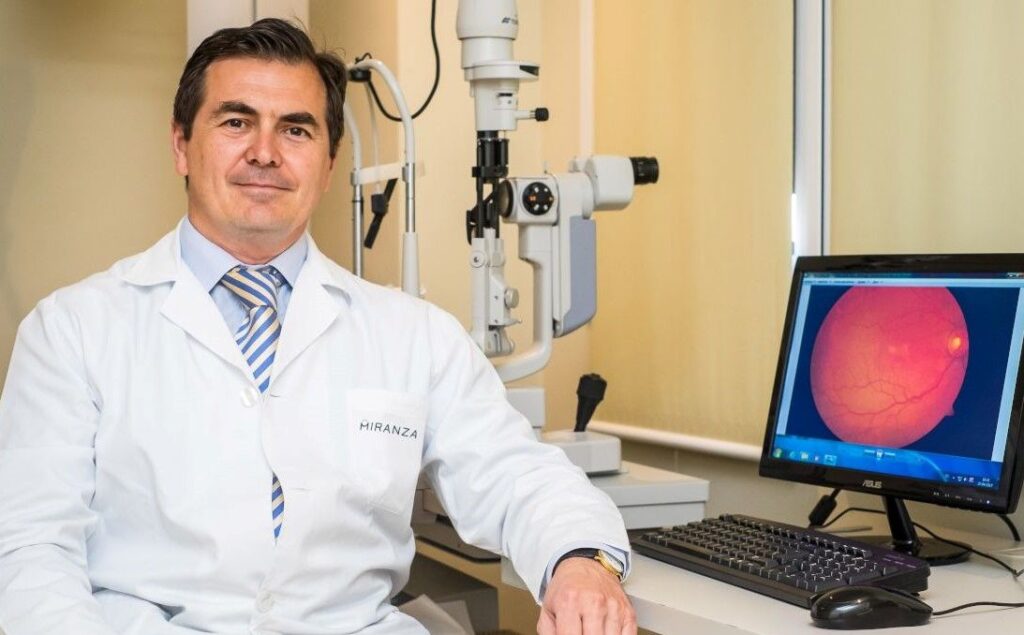
New intraocular lens for aphakic patients
In a pioneering procedure, Miranza Virgen de Luján retina specialist Dr Lorenzo Trujillo has implanted an intraocular lens for astigmatism in an aphakic patient (missing her natural lens).
Restoring vision of an aphakic patient
The novelty of the procedure lies in the fact that, for the first time, an implanted lens corrects astigmatism (toric lens) in a patient who is missing her natural lens. The lack of capsular support, which in other cases was solved by stitching the lens to the sclera (white of the eye), was treated on this occasion with another new procedure consisting of anchoring the lens on the sclera without stitches. A third unprecedented aspect of this lens (Carlevale lens) is that it is foldable and may be inserted through a small two-millimetre incision in the cornea. This avoids the need to make a 12-millimetre incision, which is the size of the unfolded lens.
First step: expert retinal surgery
The procedure performed by Dr Lorenzo Trujillo is remarkable in its complexity. Before implanting lenses in aphakic patients, their retinas must undergo surgery to remove the remains of their natural lenses or of the previously implanted artificial lenses that have shifted to this tissue, which causes aphakia. The procedure is usually secondary to cataract surgery, when the natural or implanted lens shifts and “falls” in the eye’s internal space. Although it is the most typical complication of cataract surgery, it happens to less than 2% of operated patients and requires expert treatment. There are also known cases of spontaneous aphakia brought on by trauma or because the ligaments that hold the lens in place tend to stretch with age.
Intraocular lens for astigmatism with innovative design
After extraction of the remains of the natural or artificial lens through retinal surgery, the remaining problem is the patient’s aphakia, for which an intraocular lens for astigmatism is implanted in a space that has no supporting structure, due to the broken capsule that would otherwise support the lens. Without the supporting structure, the lens must be stitched to the sclera.
Owing to the design of Carlevale lenses, in this pioneering surgery, the lens is anchored to the inner part of the sclera with a small T-shaped structure on the lens that is fixed to the sclera with a sutureless window, not unlike a cufflink fastened through a buttonhole. The procedure was successful, and the patient recovered her eyesight, like any other patient who has undergone cataract surgery.